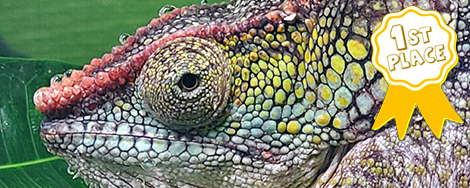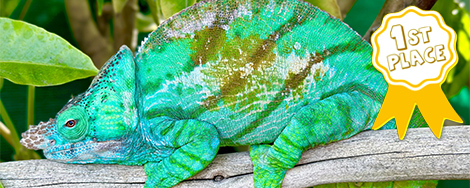Navigation
Install the app
How to install the app on iOS
Follow along with the video below to see how to install our site as a web app on your home screen.
Note: This feature may not be available in some browsers.
More options
You are using an out of date browser. It may not display this or other websites correctly.
You should upgrade or use an alternative browser.
You should upgrade or use an alternative browser.
Home Page
Recent Discussions
- Replies
- 0
- Views
- 13
Did You Know?
Chameleons change color by rearranging a lattice of nanocrystals in one of their top layers of skin cells called iridophores. Chameleons can then stretch this layer, broadening the nanocrystalline lattice, thereby causing it to reflect a different wavelength of light.
The horns on a chameleon are made up of ringlike segments of inner bone covered by a hard keratin-like skin.
Many chameleon species have a bright red, orange or yellow mouth. This conspicuous interior when displayed is used as a defense against predators.
Furcifer oustaleti (Oustalet’s Chameleon) is the longest chameleon species reaching lengths of 27 inches (68cm).
Kinyongia uthmoelleri and Trioceros quadricornis gracilor have red claws.
The word Rieppeleon is named after the scientist Olivier Rieppel.
Some chameleons play dead to avoid predation; this is called thanatosis.
Pygmy chameleons have bicuspid claws where each claw has two points like a crescent moon.
Pygmy chameleons (Brookesia, Palleon, Rhampholeon and Rieppeleon sp.) often resemble dry leaves, mosses and branches.
Furcifer labordi (Labord’s Chameleon) has the shortest lifespan of only 4-5 months. It also has the shortest lifespan of any tetrapod!
We love our sponsors
- Chameleons Only
- Mist King
- Tortoise Supply
- Great Lakes Hornworm
- LLLReptile
- Mulberry Farms
- Chameleon Paradise
- Coastal Silkworms
- Dubia Roaches
- Dragon Strand
- Chamelicious Chameleons
- Full Throttle Feeders
- Gulf Coast Silkworms
- Chromatic Chameleons
- Sticky Tongue Farms
- The Critter Depot
- Mantis Place
- Rebecca Wang Art
- iPardalis
- Rainbow Mealworms
- FramsChams
- Light Your Reptiles
- Neptune the Chameleon
- Tamura Designs
- Ready's Rainforest
Featured Blog Entries
-
Intro to Bio-Activity
- cyberlocc
- Views: 70K
- Reaction score: 35
- Comments: 23
- General
Introduction to Bio-Activity: As of recent times, a lot of folks have been asking questions, and for guides on Bio-active Enclosures. How to set... -
Photographing Chameleon's in "Naturalistic" Settings
- JacksJill
- Views: 56K
- Reaction score: 18
- Comments: 5
- General
If you want a place in the Forum Calendar or a shiny medal next to your avatar there are some basic things you will have to do. First understand... -
The Philosophy of Gutloading PART 1.
- Kaizen
- Views: 55K
- Reaction score: 15
- Comments: 9
- General
The Philosophy of Gutloading Acknowledgements I would like to thank Anthony Herrel and Walter Tapondjou for their helpful advice on where to look...





